Tomato Plant Problems – How To Fix Them – 10 Ways
If you're growing tomatoes you most likely encountered one or more of these common plant problems. We explain how to identify and fix them.
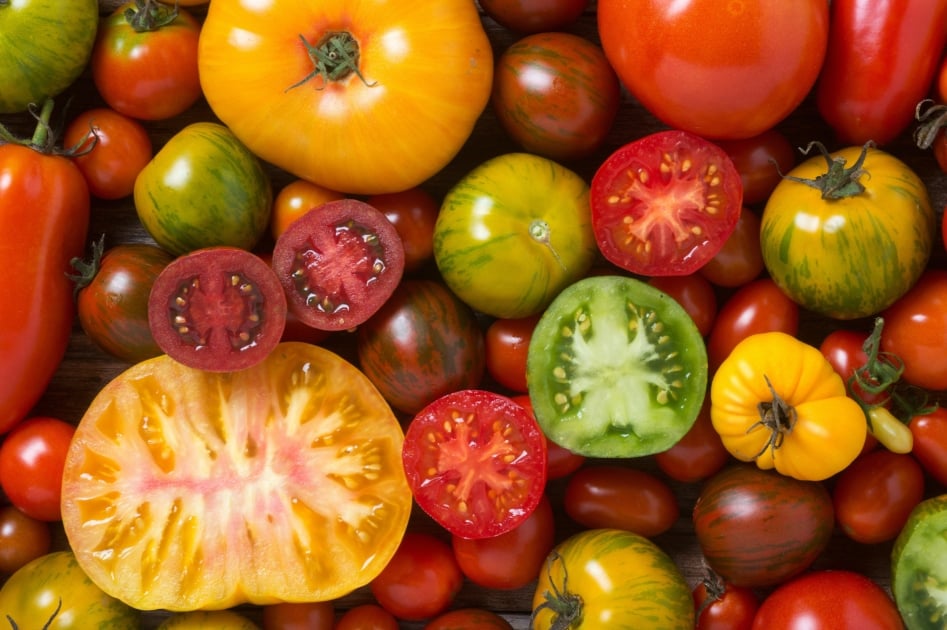
Here at Farmers’ Almanac, we get a lot of gardening questions. What tops the list are questions about tomato plants and how to fix certain tomato plant problems. We checked in with Safer® Brand organic gardening solutions and received some great advice from their organic gardening article archives. Take a look:
If you’re one of the three million people who planted a home garden this year, you’re most likely growing tomatoes. Nine out of 10 gardeners grow tomatoes, and that number would be 10 out of 10 if the holdouts would taste a fresh garden tomato and compare it to a grocery store purchase. Nothing beats the taste of a fresh home-grown tomato!
Many gardeners who grow tomatoes, however, encounter growing problems. This list of common tomato plant problems and their solutions will help you identify an issue—whether it’s just starting or already full-blown — and show you how to correct it, so you can save your tomato plants and harvest yummy tomatoes this year.
RELATED: Companion Planting Chart
1. Blossom End Rot
What it looks like: The tomato plants appear healthy, but as the tomatoes ripen, an ugly black patch appears on the bottoms. The black spots on tomatoes look leathery. When you try to cut off the patch to eat the tomato, the fruit inside looks mealy.
What causes it: Your plants aren’t getting enough calcium. There’s either not enough calcium in the soil, or the pH is too low for the plant to absorb the calcium available. Tomatoes need a soil pH around 6.5 in order to grow properly. This soil pH level also makes it possible for them to absorb calcium. Uneven watering habits also contribute to this problem. Hot, dry spells tend to exacerbate blossom end rot.
What to do about it: Before planting tomatoes in the spring, have your local garden center or Cooperative Extension conduct a soil test. Tell them you’ve had problems with blossom end rot in the past, and they will give you recommendations on the amendments to add to your soil. Lime and gypsum may be added for calcium, but they must be added in the proper amounts depending on your soil’s condition. That’s why a soil test is necessary.
Adding crushed eggshells to your compost pile can also boost calcium naturally when you add compost to the soil. A foliar spray containing calcium chloride can prevent blossom end rot from developing on tomatoes mid-season. Apply it early in the morning or late in the day — if sprayed onto leaves midday, it can burn them. Water plants regularly at the same time daily to ensure even application of water.
2. Blossom Drop
What it looks like: Flowers appear on your tomato plants, but they fall off without tomatoes developing.
What causes it: Temperature fluctuations cause blossom drop. Tomatoes need night temperatures between 55 to 75 degrees F in order to retain their flowers. If the temperatures fall outside this range, blossom drop occurs. Other reasons for blossom drop on tomatoes are insect damage, lack of water, too much or too little nitrogen, and lack of pollination.
What to do about it: While you can’t change the weather, you can make sure the rest of the plant is strong by using fertilizer for tomatoes, drawing pollinators by planting milkweed and cosmos, and using neem oil insecticides.
3. Fruit Cracks
What they look like: Cracks appear on ripe tomatoes, usually in concentric circles. Sometimes insects use the cracks as an opportunity to eat the fruit, or birds attack cracked fruit.
What causes them: Hot, rainy weather causes fruit crack. After a long dry spell, tomatoes are thirsty. Plants may take up water rapidly after the first heavy rainfall, which swells the fruit and causes it to crack.
What to do about them: Although you can’t control the rain, you can water tomatoes evenly during the growing season. This prevents them from being so thirsty that they take up too much rainwater during a heavy downpour.
4. Sunscald
What it looks like: The plants look healthy, and the fruit develops normally. As tomatoes ripen, yellow patches form on the red skin. Yellow patches turn white and paper-thin, creating an unpleasant appearance and poor taste.
What causes it: As the name implies, the sun’s rays have actually scalded the tomato.
What to do about it: Tomato cages, or a wire support system that surrounds the plants, give the best branch support while shading the developing tomatoes naturally. Sunscald usually occurs on staked plants that have been too-vigorously pruned, exposing many of the tomatoes to the sun’s rays. Leaving some foliage and branches provides shade during the hottest part of the day.
5. Poor Fruit Set
What it looks like: You have some flowers but not many tomatoes. The tomatoes you do have on the plant are small or tasteless.
What causes it: Too much nitrogen in the soil encourages plenty of green leaves but not many flowers. If there aren’t enough flowers, there won’t be enough tomatoes. Another cause may be planting tomatoes too closely together. Tomatoes are self-pollinating, meaning that each flower contains both the male (stamens) and female (pistils) parts. Wind typically pollinates tomatoes, but if plants are too close together, the wind can’t reach the flowers.
What to do about it: Have your soil tested. If you’re planting tomatoes in the spring, leave at least two feet or more between plants so that good air circulation can help pollinate them. If your plants are already in the garden, you can simply shake the flowering branches to simulate wind and get the pollen from the stamens to the pistils.
6. Catfacing
What it looks like: Catfacing makes tomatoes appear deformed. The blossom end is rippled, bumpy and lumpy.
What causes it: Plants pollinated during cool evenings, when the temperatures hover around 50 to 55 degrees F, are subject to catfacing. Blossoms fall off when temperatures drop too low. However, if the flower is pollinating before the petals begin to drop off, some stick to the developing tomato. This creates the lumps and bumps typical of catfacing.
What to do about it: If possible, plant tomatoes a little later in the season. Make sure the weather has truly warmed up enough to support proper tomato development. Devices such as a “Wall of Water”—a circle of water-filled plastic tubes—raise temperatures near the tomato and help keep them high enough on cold nights to prevent cold-related problems.
Using black-plastic spread on the soil can also help. As the plastic heats during the day, it releases the heat back towards the plants at night. Black plastic can be used as a temporary measure until the temperatures warm up enough that it’s no longer needed. Catfaced tomatoes are safe to eat; simply cut away the scarred areas.
Read more about eating ugly produce!
7. Leaf Roll
What it looks like: Mature tomato plants suddenly curl their leaves, especially older leaves near the bottom. Leaves roll up from the outside towards the center. Sometimes up to 75% of the plant is affected.
What causes it: High temperatures, wet soil, and too much pruning often result in leaf roll.
What to do about it: Although it looks ugly, leaf roll won’t affect tomato development, so you will still get edible tomatoes from your plants. Avoid over-pruning and make sure the soil drains excess water away.
8. Puffiness
What it looks like: The tomato plants look fine, they bloom according to schedule, and ripe red tomatoes are ready for harvest. When the tomato is sliced, the interior has large, open spaces and not much fruit inside. Tomatoes may feel light when harvested. The exterior of the tomato may have an angular, square-sided look.
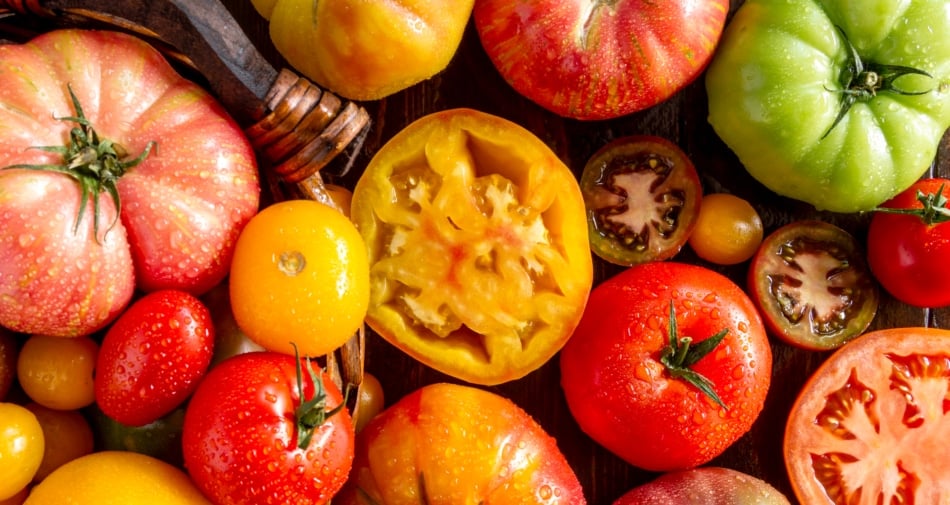
What causes it: Under-fertilization, poor soil nutrition, or inadequate pollination.
What to do about it: Make sure you are feeding your tomato plants throughout the season. A balanced fertilizer such as a 10-10-10 should be fed biweekly or monthly. Tomatoes are heavy feeders and need fertilizer throughout the growing season. For gardeners, frequent top-dressings with homemade compost and compost teas are a must.
9. Early Blight
What it looks like: You’ll find brown spots on tomato leaves, starting with the older ones. Each spot starts to develop rings, like a target. Leaves turn yellow around the brown spots, then the entire leaf turns brown and falls off. Eventually the plant may have few, if any, leaves.
What causes it: A fungus called Alternaria solani. This fungus can live in the soil over the winter, so if your plants have had problems before like this, and you’ve planted tomatoes in the exact same spot, chances are good the same thing will happen to your plants this year.
What to do about it: Crop rotation prevents new plants from contracting the disease. Avoid planting tomatoes, eggplants or peppers in the same spot each year as these can all be infected with early blight. A garden fungicide can treat infected plants.
10. Viral Diseases
What they look like: Viral diseases mainly attack the tomatoes themselves. You might find black spots on tomatoes or weird stripes on them. Don’t confuse signs of disease for just how some heirloom tomatoes look with natural stripes.
What causes them: Many of these viruses spread when plants are stressed by heat, drought or poor soil.
What to do about them: If you’ve read through all of these tomato problems and think your tomatoes may be suffering from a viral disease, spray your tomato plants with neem oil. Good soil management and using organic fertilizer for tomatoes also helps keep your plants healthy, which can help them naturally resist viruses better.
Join The Discussion!
Have you experienced any of these tomato plant problems?
Did any of the above suggestions help you?
Share your tips with your community below!
This article was published by the Staff at FarmersAlmanac.com. Any questions? Contact us at [email protected].

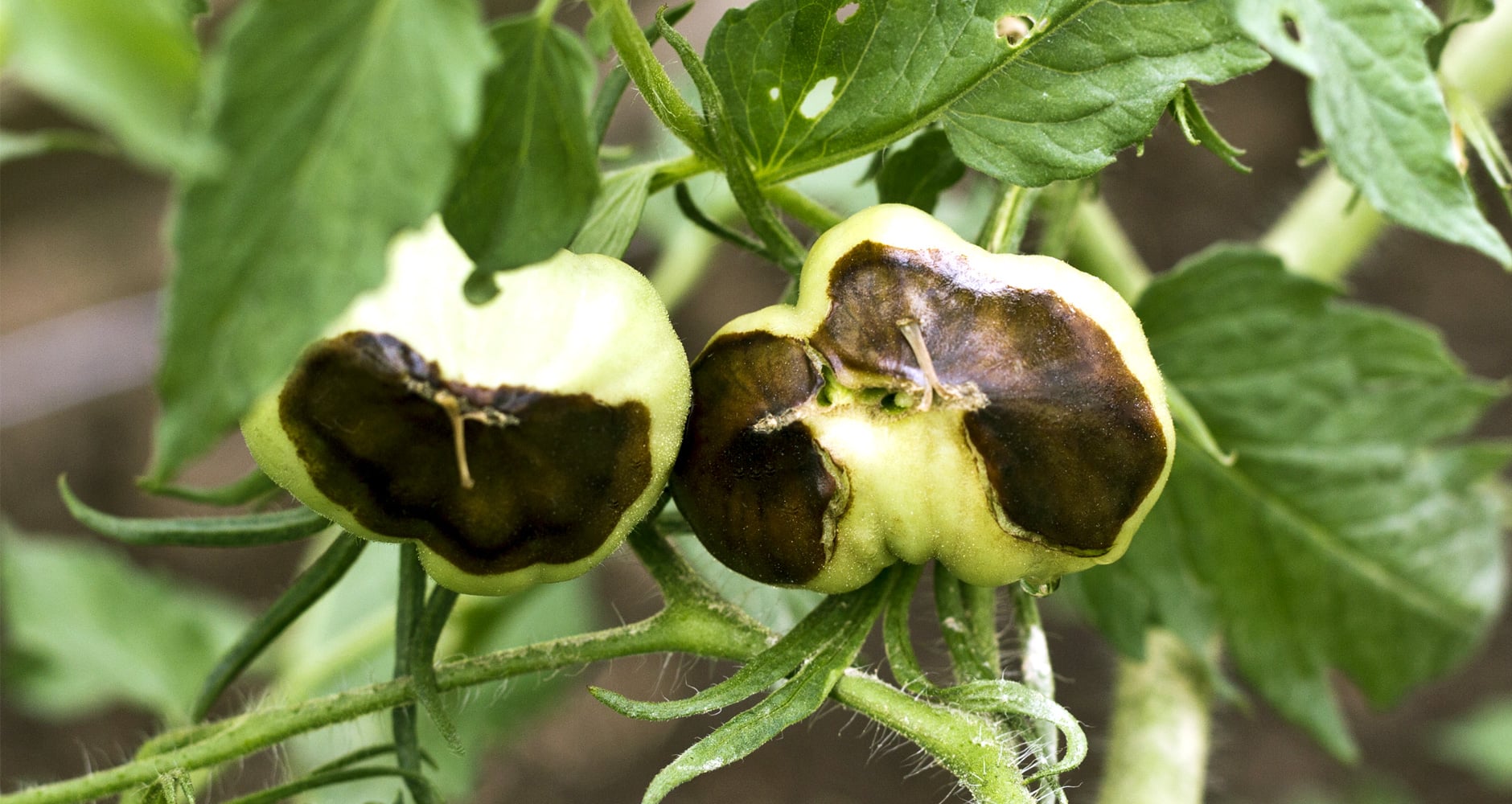
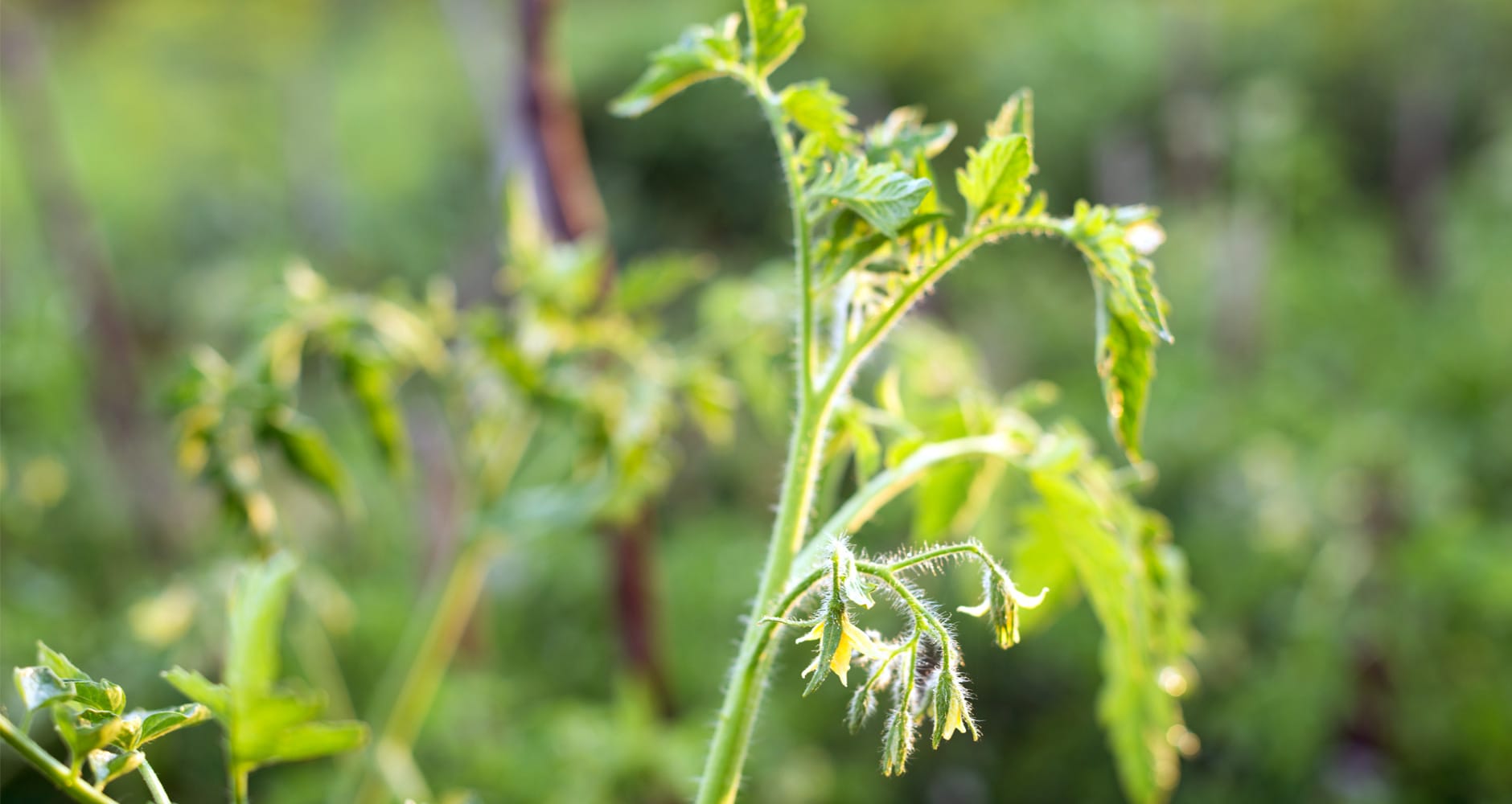
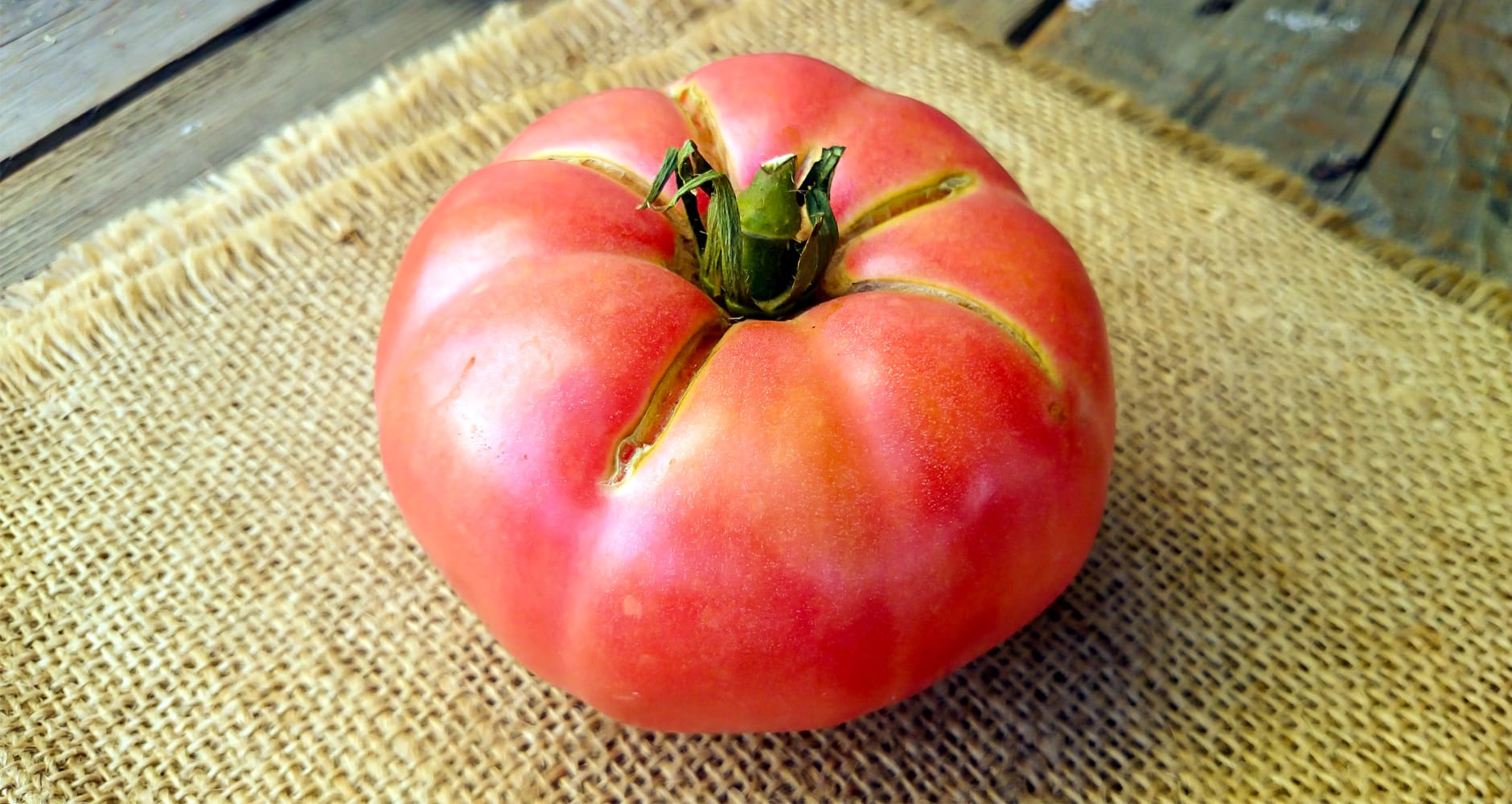
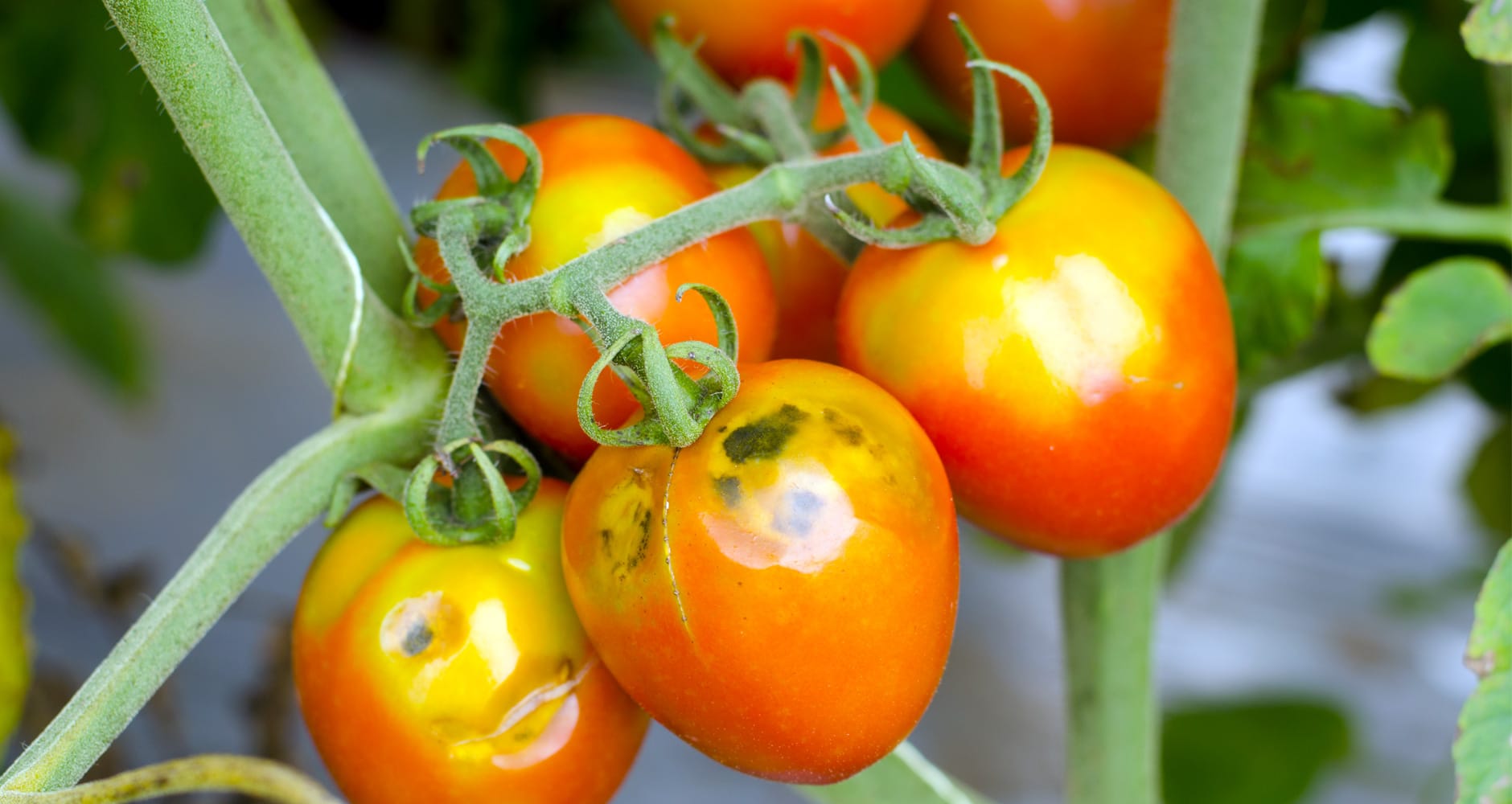
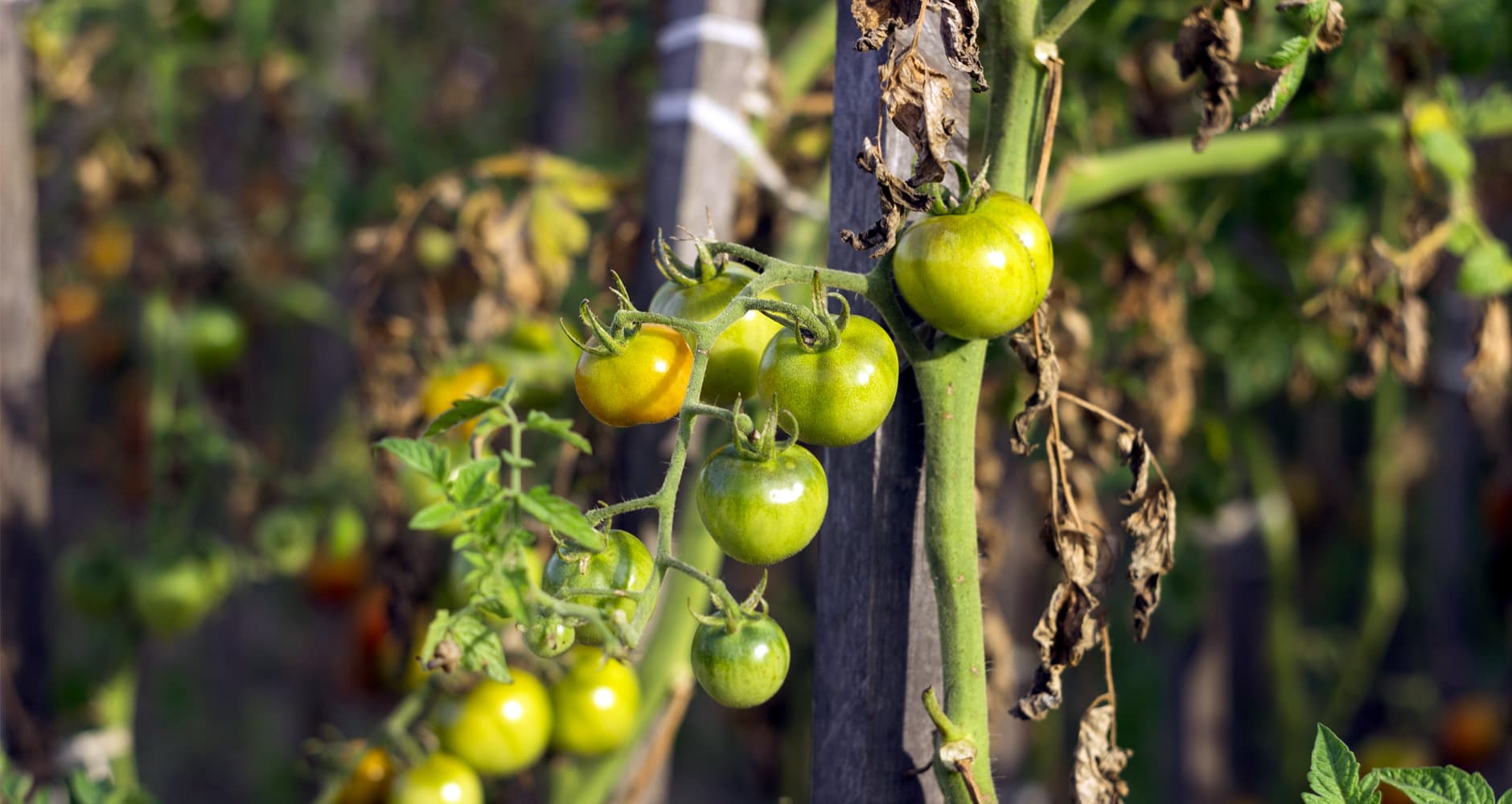
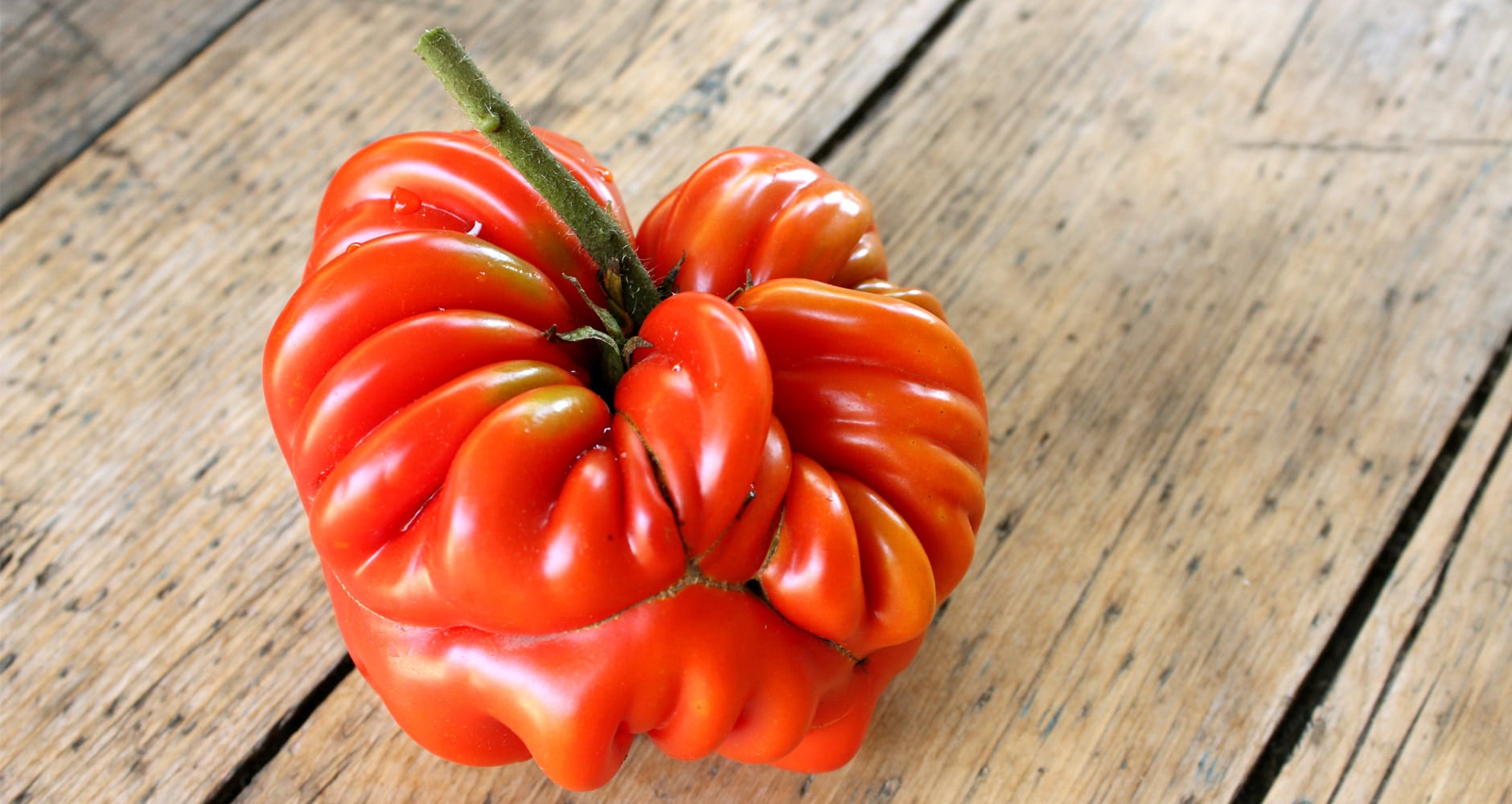
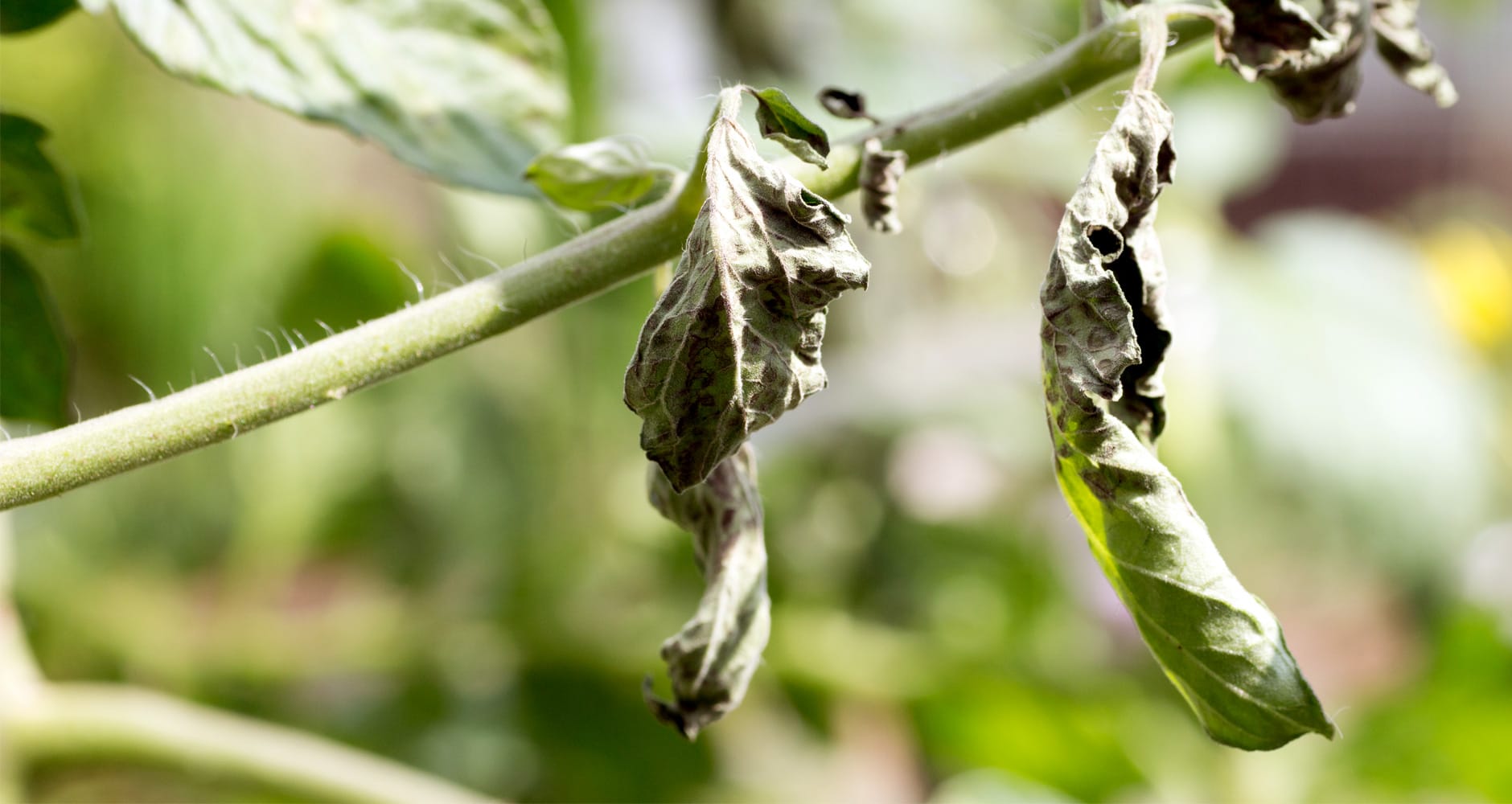
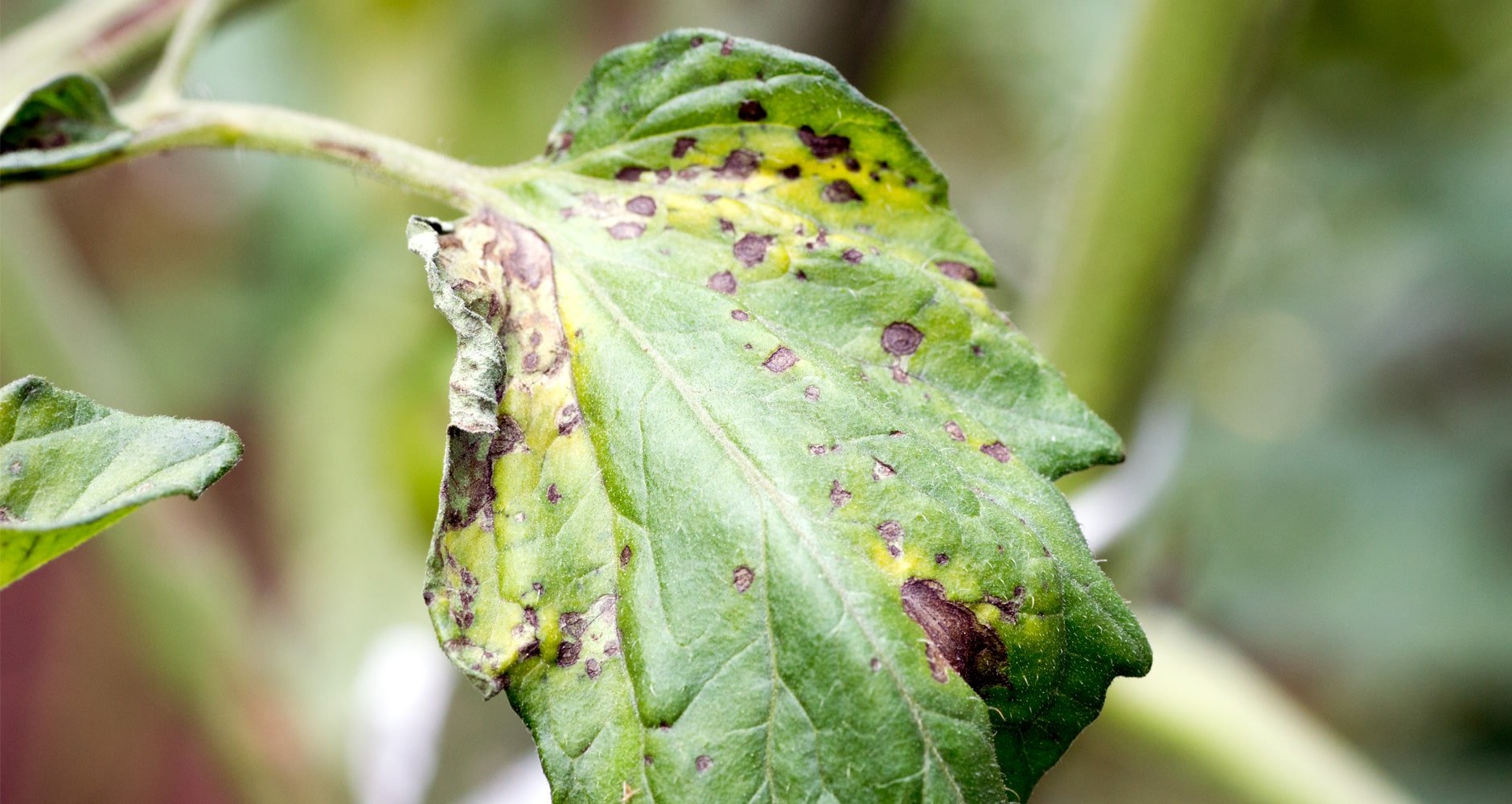
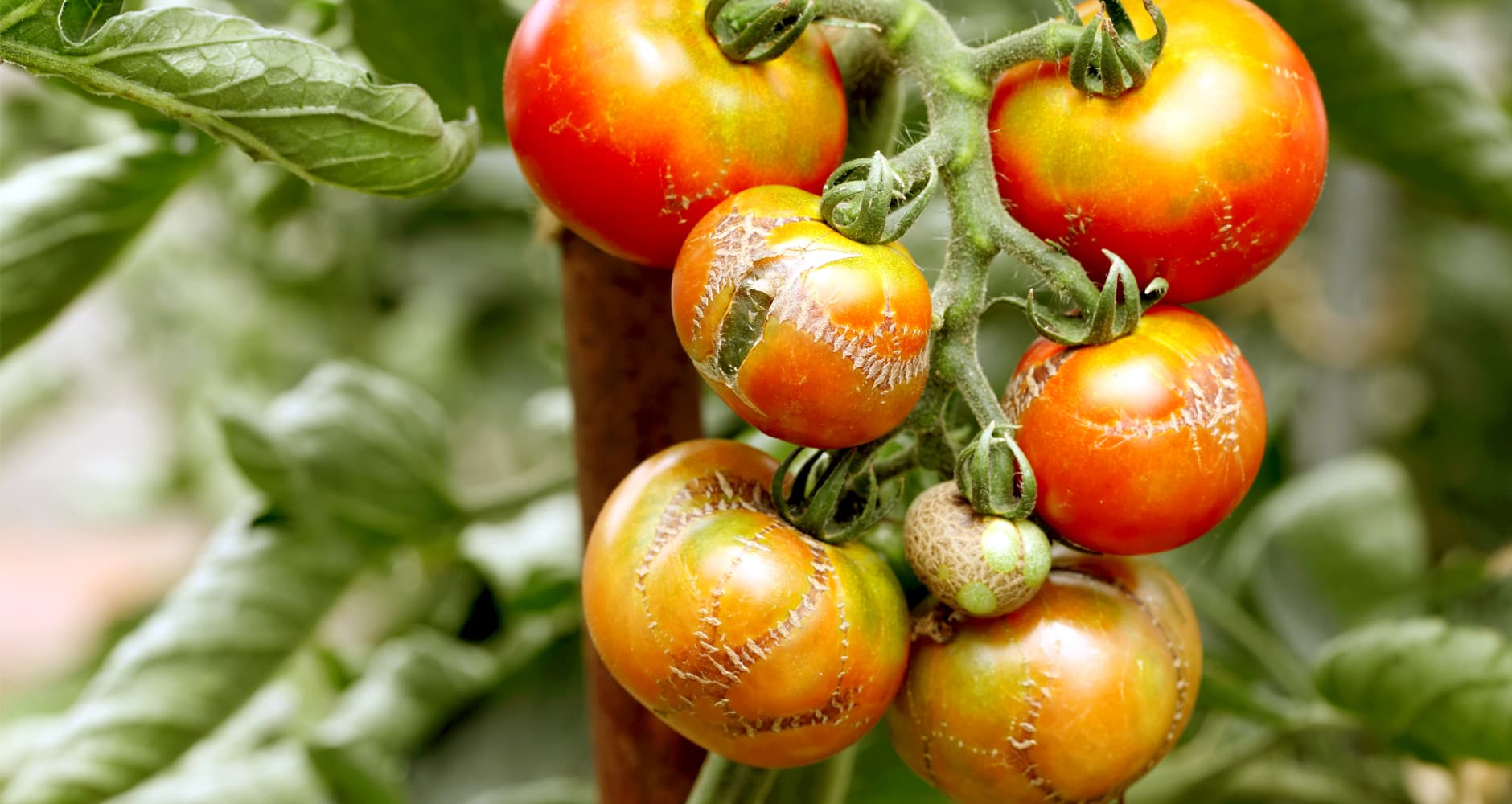












I bought an established Roma tomato plant this year and it has about four fruit growing on it now but it’s really not growing any leaves. It’s gotten a bit taller then when I bought it but not much. I’m growing it in a large planter and it’s been fertilized once a couple of weeks ago and it’s in good soil. It gets enough light and enough water but not overwatered. Just wondering what the problem is. All other tomato plants I’ve had to get very bushy. It doesn’t have leaf rot and there are no curling leaves. I’m stumped.
Hi Jackie! It’s certainly puzzling when a tomato plant doesn’t behave as expected, especially an established one! While it’s good that you’ve ruled out common issues like overwatering, lack of light, and obvious disease, there are a few other factors that could be contributing to your Roma tomato plant’s lack of leaf growth and bushiness:
Nutrient Imbalance: While you fertilized it, the type of fertilizer can make a big difference. Fertilizers high in nitrogen promote leafy green growth, while those higher in phosphorus and potassium encourage flowering and fruiting. If your fertilizer was low in nitrogen or, conversely, very high in phosphorus and potassium, the plant might be prioritizing fruit development over vegetative growth. Roma tomatoes are determinate varieties, meaning they are bred to produce their fruit all at once and then stop growing significantly, which also means they won’t get as “bushy” as other varieties.
Read more about natural fertilizers in our article here: https://www.farmersalmanac.com/natural-garden-fertilizers
Root Bound: Even in a “large” planter, if the plant was already established when you bought it, its root system might be quite large and circling the pot. This can restrict nutrient uptake and overall growth.
Temperature Stress: While you said it gets enough light, extreme temperatures (either too hot or too cold) can stress a plant and hinder its overall growth. Tomatoes generally prefer temperatures between 65-85°F (18-29°C).
Pests (Subtle or Early Stages): Even without obvious signs like leaf rot or curling, some pests can cause a general decline in vigor. Sometimes, very small pests (like spider mites, which are hard to see) can be present and stressing the plant, leading it to prioritize survival and fruit production over leafy growth. Check the undersides of the leaves very closely with a magnifying glass if you have one.
Transplant Shock (Lingering): While you bought it established, transplanting always causes some degree of shock. Sometimes, even if it appears to recover, it can take a while for the plant to fully settle in and resume vigorous vegetative growth, especially if it’s already focusing energy on fruit production.
What you can do:
Re-evaluate Fertilizer: If you remember the Nitrogen-Phosphorous-Potassium (N-P-K) ratio of the fertilizer you used, that would be helpful. If it was very low in nitrogen, consider a balanced liquid feed or one slightly higher in nitrogen for its next feeding, but be careful not to overdo it, as too much nitrogen can reduce fruit production.
Check for Root Bound: If you can, gently try to lift the plant a bit from the pot to see if roots are dense and circling on the sides and at the bottom. If it’s severely root-bound, you might consider carefully repotting it into an even larger container, or gently teasing apart some of the circling roots and replanting it in the same pot with fresh soil.
Monitor Temperatures: Ensure the plant isn’t consistently exposed to extreme heat or cold.
Inspect Closely for Pests: Take a very close look at all parts of the plant, especially the undersides of leaves and where stems meet, for any tiny insects, webbing, or unusual discoloration.
Pruning (Limited for Determinate): While Roma tomatoes don’t need extensive pruning, you can remove any suckers that are below the first flower cluster. This helps the plant focus energy on the main stem and fruit. However, don’t remove too many leaves, as they are essential for photosynthesis.
Patience: Sometimes, plants just take their time. As long as the fruit looks healthy and the plant isn’t actively declining, it might just be the nature of this particular variety.
Given it’s a Roma and already setting fruit, the determinate nature of the plant is a strong possibility for why it’s not getting as “bushy” as your previous plants. However, the lack of any new leaf growth is still a concern, suggesting one of the other factors might be at play.
We hope this helps you see more fruit from your efforts!
Best wishes from all of us at FA 🙂
When rain is predicted, especially after a dry spell, I pick all the ripe or nearly ripe tomatoes and bring them in. They are especially delicious at this point, with the sugars concentrated. This is a perfect time to can them to capture that wonderful flavor. Fully ripe fruit left on the vine will be prone to crack, as mentioned in #3 above. I feel the tomato flavor seems diluted when eaten at this time.
Hi Vicki, Thanks so much for sharing your experience. We’ll have to try your method! Sounds smart … and delicious. 🧡
My tomatoes are crunchy even when ripe why ?
Yesterday I was checking on our fairly new tomato plants, planted about a month ago in good brand topsoil (I tried to find one that said it was good for tomato plants) I also use an every two-week tomato food supplement that you mix with water.
Anyway, I saw what appeared to be pink things on the underside of a few of the leaves, my first thought was aphids, but most of the resources said aphids typically are green. It’s clear to me that I have a problem but not sure what it is or how to fix it. Any advice would be welcome.
Those are, indeed, pink/red aphids.
I have my tomatoes growing in a clump low to the ground
I really enjoyed reading your blog post. It’s clear that you put a lot of effort into researching and presenting the information in a clear and engaging way.
Thank you! We hope to provide useful information to our readers!
My heirloom beefsteak tomato plants are growing great in raised beds here in northern Georgia except they only grow 2 tomatoes at a time. Is this normal?
Pick the first blossoms as soon as they appear. Keep doing this until you get as many blossoms as you want. The primary purpose of the plant is to reproduce and when you take the blossoms away it will come back with twice as many. This is the same for most garden plants.
Why are my tomatoes growing attached to each other
I have been burying in a banana peel when I plant out my Romas. As it breaks down, the banana peel imparts its calcium and potassium and anything else it breaks down into.
These are great tips! Thank you!
I also place them near pepper plants and also the peels keep aphids away!
I still have my Better Boy in the large pot it came in. I have one small tomato and need to know if I have to use a 10-10-10 fertilizer and take out of the pot? I have put a few granules of ‘Mater Magic’ on top of soil before the tomato appeared, and it is 8-5-5. Should I take it out of the pot and put in at bottom then put back in pot?